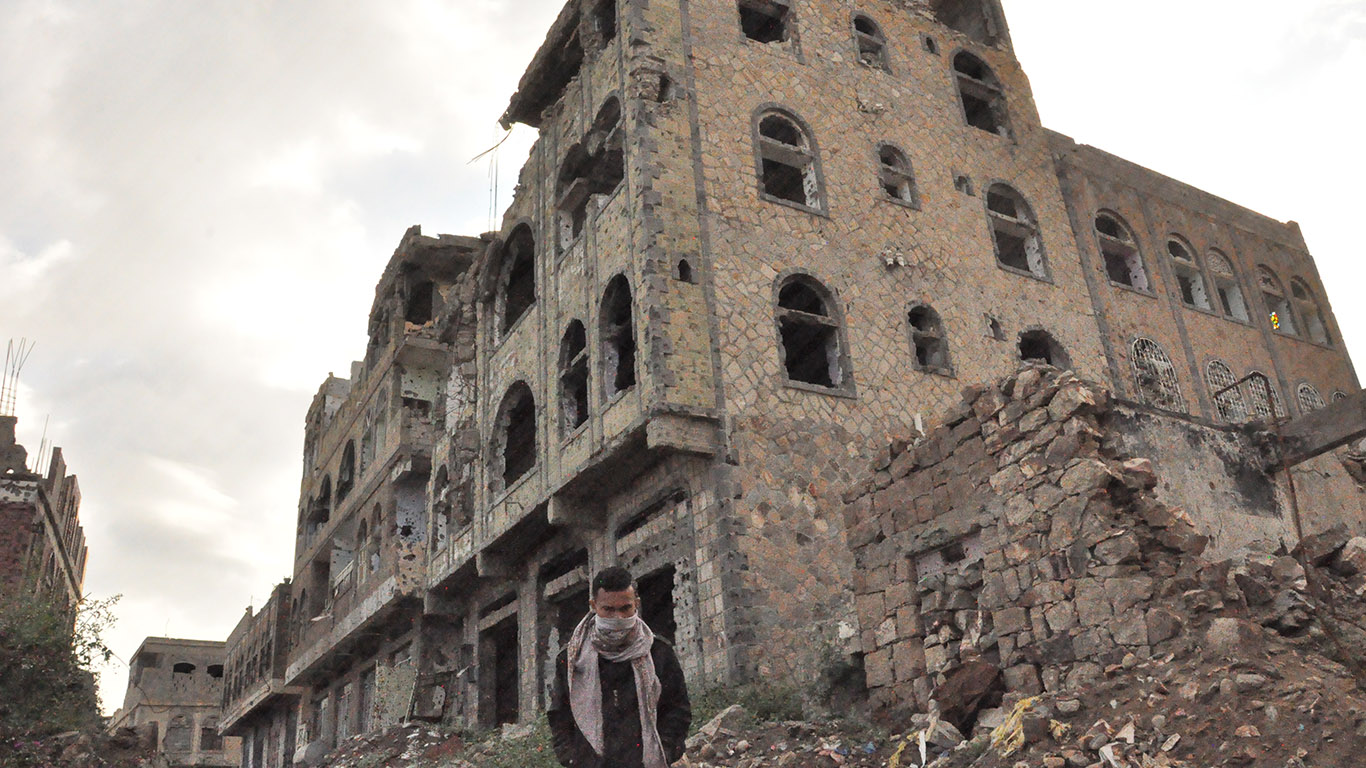Yemen: Caught in the Crossfire of USA-Iran Tensions
News of the USA’s failed assassination attempt on leading Iranian general Abdul Reza Shahlai in Yemen in January demonstrates how Washington’s tensions with Iran are driving further conflict in Yemen. Following Iran’s promise of revenge for the killing of its top general Qassem Soleimani by the USA, further escalation through proxy violence is a tool likely to be used by Iran. This would lead to Yemen becoming a hotspot of this power-struggle.
A devastating missile attack which officials blamed on the Houthis hit a government military camp in Marib on January 18, killing over 80 soldiers. The faction which has moved closer to Iran throughout Yemen’s war is apparently further driving tensions.
Throughout the war in Yemen, Saudi Arabia and the USA have identified the Houthis as an Iranian proxy. Although according to United Nations experts Iran supplied some military equipment along with other material provisions, its’ support for the Houthis was initially minimal. Tehran had even criticized their forceful takeover of Sanaa in September 2014 during the faction’s insurgency against the post-Arab Spring government of Abdrabbuh Mansur Hadi. Furthermore, the Houthis are more independent than other regional Iranian allies, such as those in Iraq.
Yet just before Soleimani’s assassination, the Houthi-Iran relationship transformed considerably in 2019, and support from the latter has since become more open, despite both previously denying such ties existed. Last August, a Houthi delegation made an official visit to Tehran, with Supreme Leader Ayatollah Ali Khameinei declaring support for the Houthis and a “strong government” in Yemen. A Houthi delegation also met Iranian Foreign Minister Javad Zarif in Oman last December.
Islamic Revolutionary Guard Corps (IRGC) Major General Mohammed Bagheri openly admitted their ties in a TV interview when he conceded that Tehran had provided “advisory and intellectual support” to the Houthis last September. Two months later, the Houthis and Tehran officially signed their first military cooperation deal, showing a consolidation of their relationship.
Along with other Iranian-aligned factions such as Haashd al-Shaabi in Iraq and Lebanon’s Hizbullah, the Houthis have been branded part of the “Axis of Resistance”, a bond which will only tighten amid increasing tensions towards Iran.
Saudi Arabia’s war in Yemen was launched on the pretext of countering an Iran proxy, however it has become a self-fulfilling prophecy. Since March 2015 its bombing campaign and subsequent blockade, which was designed to weaken and isolate the Houthis, has instead pushed them closer to Iran. Meanwhile, Tehran has sought to counter what it perceives as expanding Saudi influence over Yemen, and analysts argue that Trump’s ‘Maximum Pressure’ campaign has driven Tehran to further expand its regional influence, which has therefore arguably strengthened the relationship between Iran and the Houthis.
The USA has sold billions of dollars’ worth of weapons to Riyadh throughout the war, enabling the Saudi bombing campaign. Donald Trump’s administration justifies this as a necessity to counter Iranian influence. Aside from countering Al Qaeda in the Arabian Peninsula (AQAP), the USA itself has no clear strategy over Yemen, but it views Yemen’s Houthi conflicts from a Saudi point of view, therefore unequivocally taking Riyadh’s side in the conflict.
Trump is seeking to increase pressure on Tehran, having imposed further sanctions following its retaliation against US-aligned military bases in Iraq after Soleimani’s killing. As long as such discourse on countering Iran dominates in Washington, Saudi Arabia will have an increased incentive to continue assaults on Yemen.
Peace in Yemen had looked more promising near the end of 2019 following the Riyadh agreement to unify the Hadi government and the separatist Southern Transitional Council (STC). Overall violence had decreased and furthermore, Saudi Arabia and the Houthis had been communicating secretly behind closed doors.
Yet the Houthis reacted harshly to Soleimani’s killing, calling his assassination and the assassination of other prominent Iranian-linked generals “a clear attack on all Muslims”. The faction organized large protests in Sana’a and the Sadaa province as a result, declaring their support for Tehran while signalling their aim to end the “barbaric” US presence in the region. The assassinations have also turned the Houthis further against the USA, which Houthi leader Abdulmalik Al-Houthi once again recognised as a key supporter of the war on Yemen.
A key consequence of these events is that peace with the Houthis will become harder to achieve. Last September it was reported that Washington was in secret talks with the Houthis to end the Yemen war. However, such prospects will now be even more unlikely.
An increased Iranian presence in Yemen could also be disruptive to peace efforts. Tehran opposed the Riyadh agreement in November, claiming it enforces the “Saudi occupation” of Yemen. Moreover, the agreement sought to unify both the Hadi government and STC against the Houthis. Given how recent events have further polarized the Houthis, this could now trigger an even stauncher reaction. The Houthis have previously threatened to block the Red Sea shipping lane, which serves as a key global trade route. Subsequently, vessels could be targeted, and the Houthis have carried out attacks on the Red Sea and Bab el Mandeb before, and recently seized a vessel there.
Houthi violence had again increased in late December and continues in January, with an attack on a Yemeni military camp following Soleimani’s death. Though its attacks on southern Saudi territory had decreased, having proliferated significantly in the first half of 2019, the area could once again become a target, as the Houthis have shown the willingness and capabilities to do so. Meanwhile, the Saudi air force has retained a presence in northern Yemen, risking a further cycle of violence should either side decide to escalate further.
While Yemen’s state has broken down, due to Riyadh’s intervention and the conflict, the Houthis have established themselves as the de-facto dominant power in northern Yemen. They have already formed a cabinet with ministerial positions and the November appointment of Houthi figure Ibrahim Mohamed al-Dailami as Yemen’s ambassador to Tehran, shows Iran is legitimizing Houthi control and its attempts to present itself as a legitimate state.
Beyond supporting the Houthis as a proxy for violence, Tehran will seek to secure the faction’s long-term control over northern Yemen to irk its regional rivals Saudi Arabia and the USA. Tehran could well become a future powerbroker in Yemen and will likely try to tilt the balance of power with its Houthi relationship in this way, so that it gains more influence over the faction.
At a time when Yemen’s peace initiatives are already fragile, US-Iranian tensions will likely have further destabilizing implications for the country. With the prospect of further escalations, comes the likelihood of worsening domestic tensions and diminishing hopes of peace within Yemen.


 Jonathan Fenton-Harvey
Jonathan Fenton-Harvey